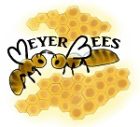The world is buzzing with conversations about sustainability, and few practices are as hands-on and rewarding as beekeeping. Beyond the sweet reward of honey, maintaining a hive supports local ecosystems, strengthens pollinator populations, and teaches valuable lessons about nature’s balance. For anyone curious about this journey, beehive kits serve as the perfect starting point.
Rather than just being a collection of wooden boxes, these kits represent the foundation of a thriving micro-ecosystem. Let’s explore how beehive kits, available for sale, are shaping the future of backyard beekeeping and environmental stewardship.
The Role of Beehive Kits in Sustainable Living
Pollinator populations have been declining globally, threatening food security and biodiversity. By installing a hive at home or on farmland, individuals can directly support local pollination networks.
Beehive kits make this possible by giving you everything you need to create a functional, safe, and accessible home for bees. They bridge the gap between human curiosity and ecological responsibility, empowering people to take action.
How Beehive Kits Empower Different Types of Beekeepers
- The Hobbyist: For beginners, kits provide simplicity—clear structures, manageable sizes, and straightforward assembly. It’s an approachable way to join the beekeeping community.
- The Educator: Teachers, parents, and environmental groups use hive kits to demonstrate biology, ecology, and food system sustainability.
- The Professional: For advanced beekeepers, upgrading with new hive kits allows for scaling operations while keeping maintenance efficient.
Innovations in Modern Beehive Kits
The traditional image of a hive has evolved. Today’s beehive kits for sale come with innovative designs that reflect modern needs:
- Observation Windows: Allowing beekeepers to peek inside without disturbing bees.
- Ventilation Enhancements: Ensuring colonies stay healthy through seasonal changes.
- Eco-Friendly Materials: Responsibly sourced wood and non-toxic finishes are common in sustainable hive kits.
- Modular Expansions: Hives designed to grow with your colony, making it easier to add supers or brood boxes.
Why Beehive Kits Matter for Local Communities
Beyond individual households, the impact of installing hives can ripple outward:
- Urban Green Spaces: Rooftop hives and community gardens thrive when bees pollinate nearby plants.
- Local Food Production: Strong pollination means healthier crops for local farmers and gardeners.
- Education and Awareness: Schools and communities that adopt beekeeping practices inspire a new generation of eco-conscious citizens.
Steps to Start With Your Beehive Kit
- Research: Understand your region’s beekeeping regulations and climate requirements.
- Select Your Kit: Choose a kit size and type suited to your goals (hobby, teaching, or scaling).
- Site Selection: Pick a sunny, dry, and safe location for your hive.
- Install Bees: Purchase package bees or nucs separately, then introduce them to your hive.
- Learn and Observe: Keep track of your hive’s growth, seasonal needs, and honey production.
The Bigger Picture
When you invest in beehive kits, you’re not just starting a hobby—you’re joining a global effort to safeguard pollinators, protect biodiversity, and create a more sustainable future. Every hive set up in a backyard or garden is a small step toward healthier ecosystems.
FAQs
Q1: Can I keep a beehive in a small backyard?
Yes, as long as local laws allow it and you provide safe space and water, small backyards can support healthy hives.
Q2: Do I need protective gear with a beehive kit?
Protective gear is usually sold separately, but it is highly recommended for safe inspections and management.
Q3: What season is best to start using a beehive kit?
Spring is the ideal season, as it gives colonies time to grow before winter.
Q4: How much honey can I harvest from one beehive kit?
A strong hive can produce 30–60 pounds of honey in its second year, though yields vary with climate and management.
Q5: Are beehive kits eco-friendly?
Many modern kits use sustainably sourced wood and are designed to reduce environmental impact.
